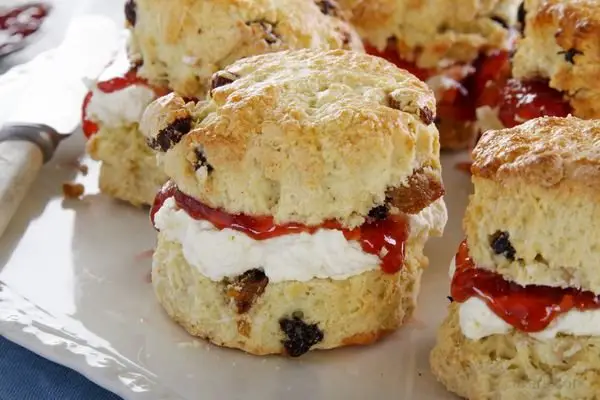Victoria Sponge Cake is a classic British dessert loved for its light and fluffy texture, filled with a luscious layer of fresh cream and sweet jam. It’s often enjoyed as a delightful treat for afternoon tea or special occasions.
However, life can be unpredictable, and sometimes we find ourselves with more cake than we can consume. This leads to the question: Can you freeze Victoria sponge cake with fresh cream?

The Dilemma of Freezing Fresh Cream
When it comes to freezing cakes with fresh cream, there is some concern due to the delicate nature of cream. Freezing can cause the cream to separate or become watery, leading to a compromised texture and taste.
Additionally, the cake itself might undergo changes in structure and moisture content during the freezing and thawing process. It’s essential to consider these factors before deciding to freeze a Victoria sponge cake.
Factors to Consider
Cake Structure
Victoria sponge cake consists of two layers of light and airy sponge, with a generous filling of fresh cream and jam in the middle.
The structural integrity of the cake can be affected by freezing, as the moisture in the cream and the cake itself can alter the texture. It’s crucial to ensure that the cake will maintain its shape and not become soggy or dense after freezing.
Cream Stability
Fresh cream is known for its delicate nature and can be challenging to freeze successfully. The high water content in cream can lead to ice crystal formation, affecting its smoothness and consistency. It’s important to consider whether the cream will retain its stability and not separate or become grainy after freezing.
Freezing and Thawing Process
The freezing and thawing process can have a significant impact on the overall quality of the Victoria sponge cake. It’s essential to follow the correct procedures to minimize potential damage. Proper packaging and adequate thawing time are vital for preserving the taste and texture of the cake.
Freezing Victoria Sponge Cake
Preparation
Before freezing the Victoria sponge cake, it’s essential to prepare it properly. Start by ensuring that the cake has cooled completely. Room temperature or warm cake should never be frozen, as it can lead to condensation and moisture buildup.
Wrapping and Packaging
To protect the cake during freezing, it should be tightly wrapped and packaged. Begin by placing the cake on a sturdy cardboard base or a freezer-safe plate. Wrap the entire cake, including the sides, with multiple layers of plastic wrap or aluminum foil. This will help prevent freezer burn and maintain the cake’s moisture.
Freezing Time and Storage
Once the Victoria sponge cake is securely wrapped, it’s time to freeze it. Place the wrapped cake in the freezer, ensuring it sits on a flat surface to maintain its shape. It is recommended to freeze the cake for a maximum of one month for the best quality.
When it comes to storage, consider the space in your freezer and make sure the cake is not in close proximity to strong-smelling foods that can affect its flavor. It’s advisable to label the package with the date of freezing for easy identification.
Thawing and Serving
When the time comes to enjoy your frozen Victoria sponge cake, it’s important to thaw it properly to preserve its taste and texture. The cake should be thawed slowly in the refrigerator. Simply transfer the wrapped cake from the freezer to the refrigerator and allow it to thaw overnight.
Avoid thawing the cake at room temperature or using methods like the microwave, as they can lead to uneven thawing and potential loss of moisture. Thawing the cake slowly in the refrigerator ensures a more controlled process and minimizes the risk of texture and taste alterations.
Once the cake is completely thawed, remove the wrapping carefully. It’s normal for some condensation to appear on the surface, but gently blotting it with a paper towel can help absorb excess moisture.
Maintaining Cake Quality
To maintain the quality of your Victoria sponge cake after freezing, it’s important to consider a few additional tips:
- Consume the thawed cake within a couple of days for the best taste and texture.
- Store any leftover slices in an airtight container in the refrigerator to maintain freshness.
- Avoid refreezing the cake once it has been thawed, as this can lead to further deterioration in quality.
- Consider adding fresh cream and additional toppings, such as fresh fruits or powdered sugar, just before serving to enhance the presentation and taste.
Alternative Options
If you have concerns about freezing a Victoria sponge cake with fresh cream, there are alternative options to consider:
- Freeze the unfilled sponge layers separately: You can freeze the sponge layers without the fresh cream and assemble the cake with fresh cream and jam when you’re ready to serve.
- Opt for buttercream or stabilized cream: Buttercream or stabilized cream fillings are more freezer-friendly options, as they have a better chance of maintaining their texture and stability after freezing.
FAQs
Yes, buttercream is a more freezer-friendly option and can be frozen with the cake.
Freezing can slightly alter the texture, but when thawed properly, the taste should remain intact.
It is recommended to consume the cake within one month for the best quality.
Yes, you can freeze individual slices by wrapping them tightly and following the same freezing and thawing instructions.
It’s best to decorate the cake with fresh cream before serving rather than decorating it while frozen. This ensures that the decorations stay fresh and visually appealing.
Conclusion
In conclusion, freezing a Victoria sponge cake with fresh cream is possible but requires careful consideration and proper handling. Pay attention to the cake’s structure, cream stability, and the freezing and thawing process to ensure the best results.
Remember to follow the outlined steps for preparation, packaging, freezing, thawing, and serving to maintain the cake’s quality.
